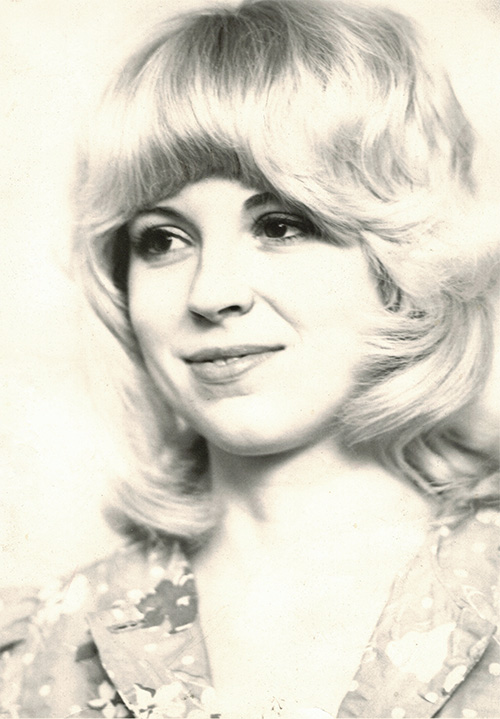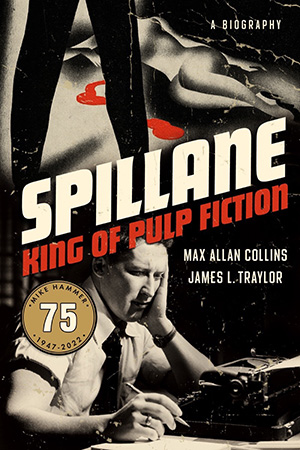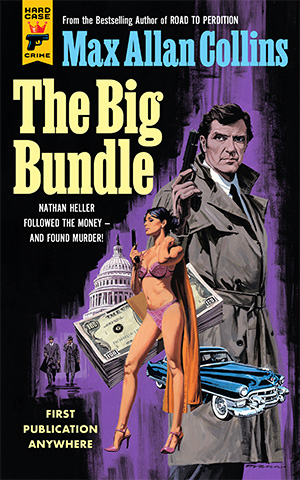Our wedding anniversary is coming up on June 1. It’s our 55th, a number that sounds more like a speed limit than a designation of how long two people have been together in a marital partnership. Barb and I have been a couple longer even than that – the fall of 1966 – and have known each other since childhood.

In the West Junior High band, here in Muscatine, Iowa, Barb was first chair trumpet and I was second chair. I was okay (not false modesty) but she was excellent. I tried several times to “challenge” her, the process by which you could unseat the person occupying the chair above yours. I failed miserably, and I would even say trying to play “Golden Gate” (the difficult piece she sadistically chose) was one of my more humiliating experiences, even in junior high terms, which is basically one humiliating experience after another. The band director actually interrupted my performance, saying, “I lost you somewhere, Mr. Collins.” Barb had already completed the impossible number flawlessly.
And yet I wound up marrying the girl who had visited upon me the most withering humiliation of my youth. This only goes to show how weak a male can be when a beautiful blonde is willing to go out with him. (I should also note that I quit band after junior high, concentrating on chorus.)
We were thrown together, in a way, because we were the only two of our extended crowds who had, after high school graduation, wound up at Muscatine Community College and not at the University of Iowa or some other institution of higher learning. Our first date in MCC days was to Wild Cat Den as part of a group that may have been a church one – I don’t recall. I only know I made clear to Barb how little I enjoyed the Great Out of Doors. Despite her lovely company, I had a terrible time, looking out for snakes and other small creatures bent on my destruction.
How we wound up on a second date, I will never know. We went to the nearby Quad Cities to a movie – possibly a drive-in – and I was trying to impress her with my brilliant gift of gab. She was quiet, occasionally nodding, and doing her best not to look glazed (she still does this when I am off on some verbal tear, which is frequent). She states that the moment she fell in love with me was when I put my hand in a water glass (during some brilliant monologue) and she had smiled and thought to herself, “He’s not so smart. I can put up with this.”
We were an item by Thanksgiving, disgusting our fellow students with our lovey-dovey behavior. It became obvious to me that, within this quiet lovely girl, was a smart, funny human being worth hanging out with forever. A crisis having to do with her mentally ill mother dragging Barb and two of her sisters across country (to Arizona) to get one of those sisters well from a supposed illness (undiagnosed) had only brought us closer together upon her inevitable return. Her mom’s general erratic behavior had a lot to do with why we decided to get married right after graduation from MCC – Barb was nineteen, I was twenty.
When I look back on these fifty-five years, I realize how very lucky I was and continue to be. While I tend to focus on my career, I don’t value anything more than my relationship with Barb. She has continued to amaze and amuse and delight me, and occasionally put me in my place. I had no idea – nor did she – that she would develop into such a wonderful writer. The Antiques series is a unique accomplishment and my co-authorship of Barb’s novels is among my proudest achievements. The son we produced, Nathan, is another.
Then there’s how beautiful she still is. I am obviously a shallow soul. I have been criticized for celebrating attractive women in my fiction – apparently I should have been celebrating harridans – but I admit that one of the great pleasures of my life is the many times each day when I glance at this lovely girl (yes, I know she’s a woman!) and think, “Wow. How can I be this lucky?”
On the other hand, it’s another reason for people to hate me. I get it. I would feel the same way. I’d be right there with you saying, “That lucky effing stiff.”
She may or may not read this. She reads my updates sporadically – after all, she is subjected to what I think every time we go out together. We’re easy to spot. She’s the beauty. I’m the beast with his fingers in the water glass.
* * *
The day this appears we will have seven days remaining on the Blue Christmas Indiegogo fund-raising effort. Just in case you were wondering what to get Barb and me for our wedding anniversary.
I will continue, this week, to honor requests from anyone who puts in $35 or more to do my best to fill in some blanks on their M.A.C. want list. Barb and I have sent out around fifteen packages so far, often containing one-of-a-kind items that I’ve parted with in gratitude for this support.
We do not know yet (soon, I hope) if we’ve nabbed a Greenlight grant, but even if we don’t, we intend to go forward with the best version of Blue Christmas we can. The Indiegogo $5000 (we are at 85% now!) will go toward matching funds, if we get the grant, or into the production itself, if we don’t.
Chad Bishop is the mastermind here, aided and abetted by Karen Cooney. Karen is the go-getter who went and got me to do Encore for Murder as a fund-raiser for the local Art Center. If I hadn’t had the experience of turning that one live performance into a multi-camera movie (or “movie”), I would not have got my filmic juices flowing again. Right now Chad and my longtime collaborator Phil Dingeldein (and a talented young woman named Liz Toal) are working hard to get other projects going, including Reincarnal and even Road to Purgatory.
I did not imagine at this age (75, choke) post-open-heart surgery that I would be back at filmmaking again. Few in that field have trod a weirder road than mine. Mommy and Mommy’s Day had respectable low budgets (half a mil and a quarter of a mil respectively); but after that, my then best friend slash producer stole most of the profits, and my subsequent productions have been put together with spit and chewing gum – Real Time: Siege at Lucas Street Market and Eliot Ness: An Untouchable Life are respectively $10,000 and $15,000 productions but managed to get national distribution and some decent critical reaction.
And yet my graphic novel Road to Perdition became a $90 million movie (at the same time Real Time was shooting on a budget that maybe covered one day of stocking Perdition’s craft services table) and I made respectable money on two films I wrote but did not direct, The Expert and The Last Lullaby. The Quarry TV series at Cinemax, for which I wrote two scripts, also paid some bills.
Along the way there have been two documentaries (Mike Hammer’s Mickey Spillane and Caveman: V.T. Hamlin and Alley Oop) I wrote and directed, and three short films, and one I didn’t direct – A Matter of Principal – but wrote; that one was an award-winner and led to the feature, The Last Lullaby. By the way, that’s a Quarry movie with a great Tom Sizemore performance and it’s available on Amazon Prime right now.
I am the rare writer of prose fiction who will admit that he likes movies as much as books. I feel lucky, even honored, to have been able to do as much as I have in that arena, even if my own little movies have never made me a dime. The joys of collaboration – my friendships with the likes of Phil and Chad and the late Steve Henke, my creative collaboration with the late Mike Cornelison – are more reward than anyone could dream of.
Should I have gone to Hollywood and pursued that dream, as opposed to joining the fiction-writing ranks of Hammett, Chandler, Cain and Spillane? No. I do not have the temperament for what Hollywood puts writers through. Because movies are my side hustle, screenwriting for Hollywood on occasion is something I can abide. I would also probably have been married three or four times by now, and I refer you to earlier in this post for the reasons why that would have been a tragedy.
Last night I watched Mickey Spillane’s Encore for Murder on the local public access channel. Because we have landed a deal with VCI that includes both home video release and streaming for both the new expanded Mike Hammer’s Mickey Spillane and Encore for Murder, we have decided not to offer either to the Iowa or Quad Cities branches of PBS. But my collaborator Chad Bishop runs Channel 9, Muscatine’s public access channel, and his participation in the project includes the right to show Encore there.
I had worked on Encore on a computer screen – on several actually – and have seen it projected on a full-size movie screen at our recent premiere showing. But this was the first time I’d seen it on my TV at home. And that was a thrill, because that’s the venue we had in mind. I refer to it as a “movie,” but really it’s a TV program. I thought it held up pretty well. When you consider that we only decided to record the play a few days out from dress rehearsal and its one public performance, it’s another of the small miracles that seem to litter my life.
And there’s nothing wrong with small miracles. You can enjoy them. The big miracles are so overwhelming, you can’t really enjoy them.
But I’m willing to try.
* * *
I did an interview with Jason Dehart on his podcast Words, Images, & Worlds that is fairly wide-ranging and covers some things that have rarely come up, like the influence of Hong Kong movies on my work.
This is a really good interview with my frequent collaborator, Matthew Clemens.
Here’s a way to access my Batman comic strip continuity with Marshall Rogers.
Here’s a free-wheeling interview that I really enjoyed doing – you might, too.
Finally, he’s a largely positive review of Eliot Ness: An Untouchable Life.
M.A.C.














